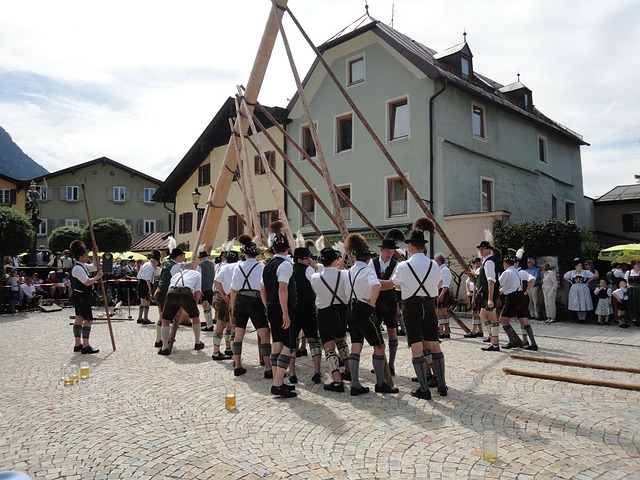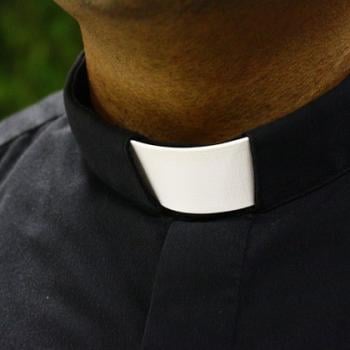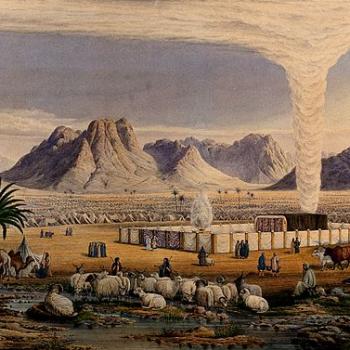
The arrival of May brings thirty-one days of opportunity to be a May Day Christian. The term “May Day” evokes three different meanings, each of which could be applied to a believer’s faith walk. The idea of calling on God only when in distress, the celebration of the new life and beauty the season brings, and the recognition of workers all come to mind. What type of May Day Christian are you?
Mayday!
Mayday and May Day are not the same. Shouting “Mayday!” conveys an emergency requiring assistance. The word derives from the French phrase “M’aidez” meaning “Help me!” Repeating “Mayday!” three times emphasizes the urgency of the distress.
Used primarily by aviators and mariners, “Mayday” serves as a distress signal in voiced radio communications. The emergency procedure term signals a life-threatening emergency.
The Situational Christian
“Mayday!” Christians turn to God only when they find themselves in dire circumstances. Although they don’t have a daily relationship with Him, they call on God to save them when things look grim. These Christians equate to foxhole Christians on the battlefield. World War I, produced the saying “There are no atheists in foxholes.” This description referred to he prayers of salvation lifted by soldiers in the trenches facing imminent death. Today the phrase more broadly describes people in crisis who bargain with God, pleading for a rescue.

May Day Seasonal Celebration
The most common association of May Day is with the celebration of seasonal change on May 1st. The event marks the beginning of summer in the North Hemisphere and occurs about halfway between the spring equinox and the June solstice. May Day finds its roots in ancient practices. In Europe, rural pagan festivals historically occurred on May 1st festivals.
As far back as 500 BC, Romans observed Floralia to honor spring. The festival of Floralia lasted a week and honored Flora, the Roman goddess of youth, spring, and flowers. When the Roman Empire expanded to the British Isles, Floralia coincided with Beltane, a Celtic holiday also observed on May 1st. This ancient earth-based pagan celebration of Beltane recognized the start of summer in the Norther Hemisphere. May Day grew out of a combination of facets of Beltane and Floralia.
May Day Festivities
Although May 1st involved various meanings and festivities for Europeans, the basic concept of seasonal change remained a constant. Unsurprisingly, then, nature played a big part in these May 1st celebrations.
Common traditions for the festivities included gathering green branches and wildflowers, an activity known as “bringing in the May.” Celebrants wove floral garlands, with lily of the valley and Hawthorne being the traditional flowers used. Often a May Queen, and sometimes a May King, was selected and crowned with wreaths of flowers representing the season.
Another popular May Day tradition is the Maypole. The festivities included setting up a Maypole, May Tree, or May Bush around which celebrants danced and sang. Originally, the Maypole was a living tree, typically a birch. chosen from the woods. Later, the pole became a permanent fixture, and all villages contained one in the Middle Ages. For the celebration, the Maypole would be decorated with colorful ribbons and streamers. And, customarily, young women would circle the decorated pole and dance around it, weaving patters of ribbons as they moved.

The Celebrating Christian
Christians have cause to celebrate not only on May 1st, but on every day in the month of May and, in fact, the entire year. The beauty of God’s creation causes joy, and believers can thank their Creator for His magnificent handiwork. While Christians won’t be dancing around Maypole in the center of town, we have the tree of Calvary to place in the center of our lives. So, the celebrating May Day Christian continually recognizes what God has done—creation and salvation—and expresses thankfulness for it.
May Day Worker Recognition
A secondary meaning for May Day, celebrating workers’ rights, developed in the 19th century. The association of May 1st with workers’ rights started in the United States during the Industrial Revolution when thousands of men, women, and children died as the result of working long hours in poor working conditions.
To end the horrible treatment of workers, a federation of unions agreed eight hours should be the standard working day. Subsequently, another labor organization encouraged workers to strike and demonstrate.
In May 1886, a national strike was organized to promote an eight-hour work week. Over 300,000 workers across the US walked off the job on May 1, 1886. Later a protest in Chicago’s Haymarket Square led to a violent and bloody confrontation with police.
In tribute to those involved in the protest, the International Socialist Conference designated May 1 as International Workers Day. The day honors what labor movements fighting for workers’ rights have struggled against and the achievements made. Today, May Day, May 1st, is an official holiday in 66 countries.
The Working May Day Christian
Christians are God’s workers. Jesus gave His followers a specific assignment before leaving Earth, the Great Commission of Matthew 28:19. They must “go” into all the world and make disciples of others, a directive extending to every day, not just one day in a spring month. Like the workers in 1886 who advocated for better conditions for laborers, Working May Day Christians can advocate for better spiritual conditions for everyone.

What Type of May Day Christian Are You?
With May on the calendar, no better time exists to consider the May Day Christian designation or designations which fit. A situational, emergency only Mayday! connection to God does not indicate a thriving faith. On the other hand, a Celebrating May Day Christian who gives thanks to God and a Working May Day Christian who works to better the spiritual conditions of others are designations for which to strive. What type of May Day Christian are you?














